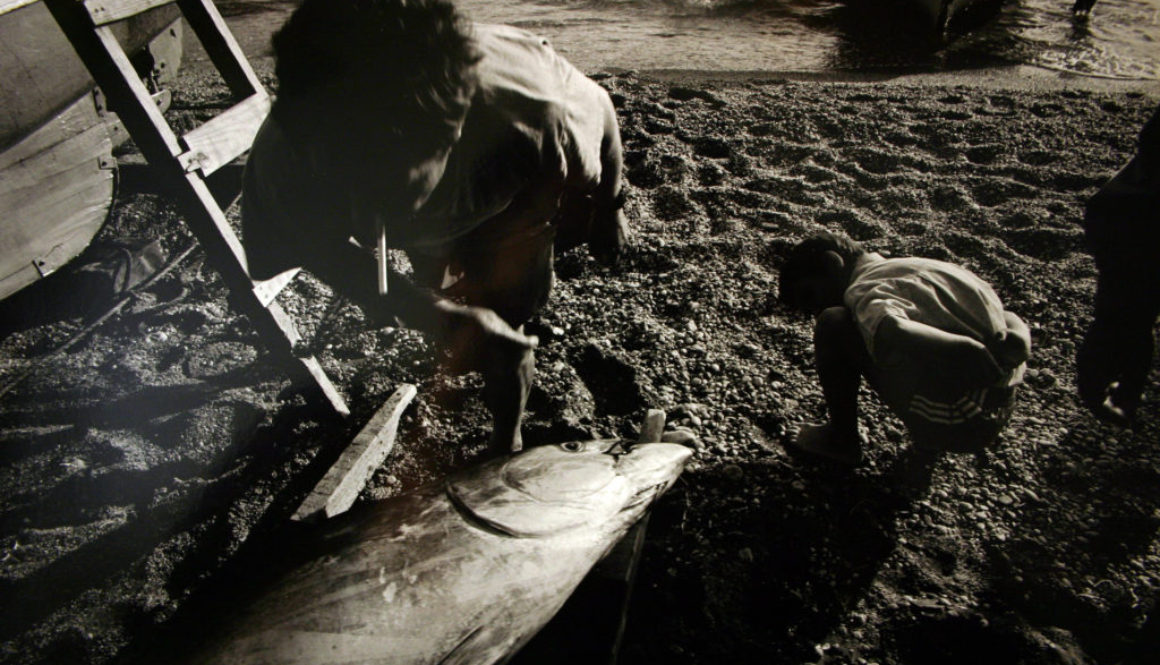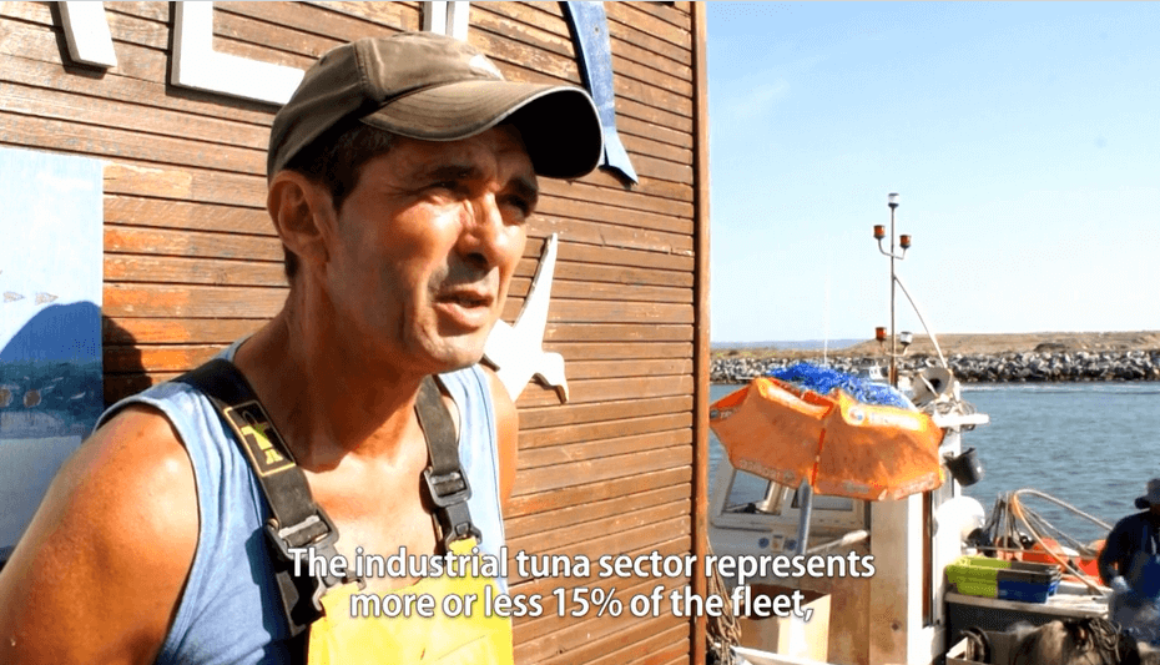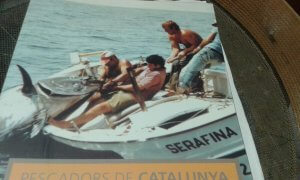Bluefin Tuna: the move from recovery to management
must directly benefit coastal artisanal fleets.
It is high time that coastal artisanal fisheries were included in the strategy to manage fishing effort, conserve stocks and distribute the benefits from the recovering Bluefin tuna resources in an equitable manner.
Brussels, 25th October 2018
Brian O'Riordan
LIFE welcomes the European Commission’s recognition that coastal artisanal fishing fleets should benefit from the reallocation of Bluefin tuna quota in a fair manner across all European fleets, and the proposal to reintegrate this marginalised sector into the Bluefin tuna fishery.
DG Mare unveiled plans to move from a recovery to a management plan for Eastern Bluefin tuna last Wednesday 17 October 2018, in Brussels, at a meeting with industry and NGO representatives to prepare for the annual meeting of the ICCAT – the International Commission for the Conservation of Atlantic Tuna. This year the 21sv Special Meeting of the ICCAT will be held in Dubrovnik, Croatia, from 10-19 November (for details see https://www.iccat.int/com2018/).
The plan is to be constructed around 3 broad objectives of management and conservation, socio-economic inclusion, and inspection and control. DG Mare officials highlighted that in strengthening the recovery of Bluefin tuna, controls need to be improved, especially the sale and laundering of illegal catches.
Overshadowing the ICCAT preparations was the announcement of criminal proceedings by Europol against 79 individuals involved in the illegal catching and trade of Bluefin tuna all along the value chain from catching through transhipment and fattening to marketing, across Italy, Malta, France and Spain. With an estimated illegal trafficking of 2,500 tonnes per year, equivalent to 50% of the quota allocated to the EU for 2018, and worth 12 million Euro per year, this organized crime illustrates how the “most regulated fishery in the world” suffers from a lack of effective control. For more details see: https://www.europol.europa.eu/newsroom/news/how-illegal-bluefin-tuna-market-made-over-eur-12-million-year-selling-fish-in-spain
Despite such significant and unquantified decades long criminal activity across the Bluefin tuna industry, the Eastern Bluefin tuna has staged a remarkable comeback in the last 10 years. This provides solid grounds for moving from a recovery plan to a management plan. However, DG Mare noted that there was still a considerable risk of overfishing due to black markets and a lack of transparency in the transhipment of fish between catching and intermediary vessels and tuna fattening units.
LIFE is happy to note that DG Mare is ready to grasp the opportunity provided by the recovery of Bluefin tuna stocks and the increase in the TAC allocated to Europe from ICCAT to end the unfair discrimination against small-scale low impact fishing activities, to alleviate the economic difficulties experienced by many small-scale fishers, and to take the pressure off other fish stocks in the Mediterranean.
The strategic importance of Bluefin tuna to alleviate the general state of overexploitation in the Mediterranean, in line with the 2017 MedFish4ever Declaration and the 2018 Regional Plan of Action for Small-scale Fisheries in the Mediterranean and Black Sea signed by 18 Mediterranean and Black Sea coastal states, can’t be underestimated. Central to these new instruments are the “equitable access to living marine resources based on sustainable fisheries and their socioeconomic role” and the granting of “preferential access for sustainable and low impact small scale fisheries along the coastal band”.
The Mediterranean small-scale fishing fleet (vessels under 12 metres using non-towed gear) is by far the largest fleet segment, with just under 70% of the active fleet in 2015 according to the 2017 STECF AEP report. Although producing only 25% of the overall catch in the Mediterranean, the fleet accounts for 65% of the fishing days, and 42% of employment. Until 2006, the Mediterranean and other small-scale fleets were permitted to catch Bluefin tuna, which provided a significant seasonal source of income for them, and an important opportunity to reduce their efforts on other stocks.
Since 2006, under the ICCAT Bluefin Tuna recovery plan (the BfT plan), small scale fishers have been effectively stopped from catching Bluefin tuna, with the consequent loss of an important source of income. This has meant that they have had to fall back on other, lower value species, with a consequent decline in their incomes and an increase in pressure on other stocks. Despite Article 17 of the CFP, and Article 8 of Bluefin tuna multiannual plan regulation which call for a fair distribution of national quotas across fleet segments and for incentives to be provided for selective and low impact fishing, this unfair situation is repeated across EU Member States. The EU’s Bluefin tuna multiannual recovery plan for bluefin tuna (Regulation (EU) 2016/1627) also stresses the importance of promoting coastal fishing activities, including in traditional and artisanal fisheries.
The small-scale fishers are ready to play their part in implementing the necessary management and control measures needed to assure that their activities contribute to achieving social, economic and environmental sustainability. For more details see: https://vimeo.com/240133802
LIFE calls for a fair proportion of the annual increase of quota to be allocated, directly from ICCAT and ring-fenced, to small scale and low-impact fisheries that comply fully with the current Monitoring, Control and Surveillance (MCS) framework.
For this to happen, it is first necessary to define artisanal coastal fisheries. LIFE insists that such a definition must first and foremost be based on the use of low impact gears, specifically hook and line techniques using hand lines and/or pole and line; “hand line and pole and line” gears have the lowest impact on the environment and least by-catch compared to other gears that target Bluefin tuna.
LIFE is in favour of a multi-parametric definition so long as this includes an obligatory criterion which restricts the definition to these gears. If the activity complies with this, then it must then comply with three out of four of the following characteristics: a) overall length of the vessel is less than 12 metres; b) the vessel is fishing exclusively inside the territorial waters, or out to 25 nautical miles, of the flag Contracting Party Country (CPC); c) the fishing trips are of a duration of less than 24 hours, and d) the maximum crew number is established at four persons.
LIFE also welcomes the elimination of the 5-tonne cap on the small scale fleets as this will provide a more inclusive basis for these to benefit from the increased tuna quotas distributed to Member States. However, this does not fully protect small-scale fishers from the negative impacts of tradeable quotas and their marginalization resulting from market-based quota allocation mechanisms. Hence, a specific clause to prohibit transferability should be included to ensure that new quota transferred to Member States for coastal artisanal fishing is non-transferable to other fleet segments including purse seiners and large-scale long-liners.
LIFE is also concerned that allowing a variation of 20% in the adjustment of fishing capacity for purse-seiners is too high and strongly recommends maintaining fishing capacity in line with the TAC. The proposed extension of the purse seine season must also be taken into account in this regard. Projections from the 2017 assessment indicated that quota reductions will be required in the future if a F0.1 strategy is continued, and it wouldn’t be prudent to increase fishing capacity, only to have to reduce it again in the coming years.
LIFE does not agree with the proposed measure to extend the purse seine season. This should not be permitted since many vessels catch their quotas in less than a week, and such an extension opens the possibility to significantly increase the fishing effort from this segment.
LIFE advises that the minimum size provisions shouldn’t change from the previous recommendations and should not be weakened by any minimum size derogation, to prevent targeting of smaller juveniles.
Finally LIFE would like to stress that there should be no increase of allowed bycatch from 5% from Rec 14-04 up to 20%, such an increase is tantamount to allowing a targeted catch of Bluefin tuna.
LIFE looks forward to working with the European and national institutions to level the playing field of opportunities between large and small-scale operators, and to ensure an equitable flow of benefits across the fleet segments, whilst maintaining healthy Bluefin tuna stocks.
♦ ♦ ♦





